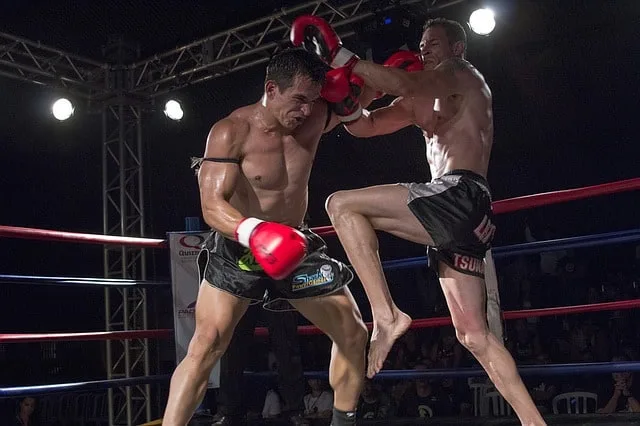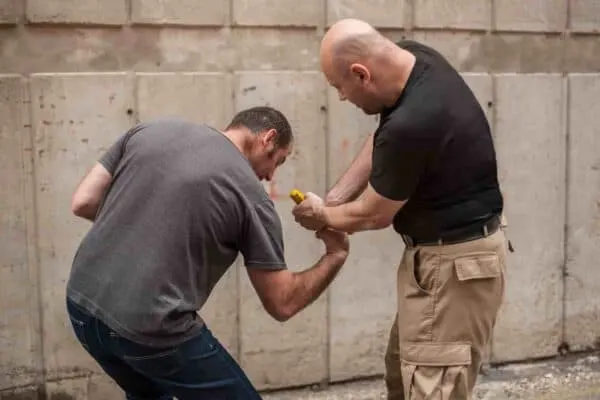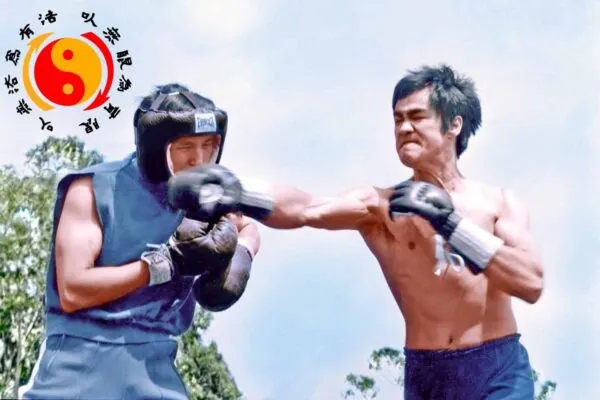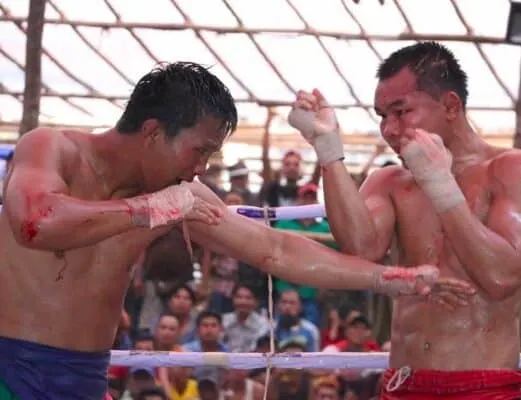
Color belt ranks are a hallmark of martial arts training. This piece of cloth practitioners wear around their waist is a visual representation of their skill level and progress and a symbol of dedication, discipline, and mastery.
However, many people often assume that every martial art has a belt ranking system as a method of structural progression, which is wrong. There are actually quite a few martial arts that do not rely on such a system and use alternative ways of recognizing practitioners’ levels of proficiency and progress.
So, in this article, we will bring you a list of popular martial arts that do not have belt-ranking systems and dig deeper into what methods these systems use to convey students’ progress and development.
1. Boxing

Boxing is one of the oldest combat sports that has been around since ancient times. However, unlike most other martial arts with such a rich history, boxing never adopted a formalized belt ranking system. What’s more, boxing doesn’t use any type of ranking system, and student’s level of proficiency is solely based on their performance in sparring and competition.
The training program is designed to prepare a person to compete under strict rules and win matches in competition. Training doesn’t include any philosophies, structural concepts of progression, or religious elements because the emphasis is on the practical application of skill and success in competition.
Boxing coaches and trainers constantly observe students’ technique, footwork, defensive skills, and overall boxing proficiency during training sessions and sparring. In fact, sparring is a crucial component of training as having students “fight” in a controlled environment and pace can provide insights into their abilities, strengths, weaknesses, and areas they need to improve. The next factor they take into consideration is physical fitness and conditioning, which are also indicators of proficiency.
Most gyms have different classes or training groups based on skill levels to ensure that each boxer trains in a group that shares a similar level of experience and goals. This generally includes amateur groups, fitness groups, and competition groups.
RELATED: What Is Golden Gloves Boxing?
2. Wrestling

The sport of wrestling has been around for thousands of years and is practiced worldwide, and there are dozens of different styles and variations. However, none of these styles include the belt ranking concept.
Instead, wrestling has always been recognized as a popular sport that primarily focuses on athletes’ development through different levels of competition. Wrestlers may progress through various competitive levels based on their success in matches and tournaments, and they are usually recognized for the divisions they compete in. Practitioners are usually split into the following levels:
- Level 0 — beginners who are just starting without prior wrestling experience.
- Level 1 (novice) — wrestlers in their first or second year of training who are starting to compete in amateur tournaments.
- Level 2 (experienced) — are senior students who have accumulated knowledge and experience in competition.
- Level 3 (advanced) — are students who have progressed far beyond others. Students at this level are capable of recognizing patterns and executing techniques relying on their muscle memory, instinct, and feeling.
- Level 4 (elite) — These are wrestlers with an incredible feel for body positions, balance, weight distribution, situational awareness, and tactics, and they are also proficient in chain wrestling.
- Level 5 (Top wrestler) — is a category reserved for finest national and international wrestlers.
In youth wrestling, categories often include age groups to ensure that wrestlers compete against opponents of similar age and size. Typical age groups include Bantam (6–8 years old), Intermediate (9–10 years old), Novice (11–12 years old), and so on.
3. Muay Thai

Muay Thai, often referred to as the “Art of Eight Limbs,” is a martial art that originated in Thailand and is one of the most popular striking martial arts in modern times. Developed in the 19th century, Muay Thai incorporates striking with punches, kicks, knees, and elbows both at the distance and inside the clinch. It is widely regarded as a complete package when it comes to striking and is a very effective combat system.
When it comes to grading for progression, traditional Muay Thai in Thailand doesn’t include belt ranking. Instead, these schools often prioritize a more organic progression based on practical experience, fight records, and the mastery of techniques. The focus is placed on a deeper understanding of the art and its real-life application.
So, instead of preparing for the exam or reaching the required skill level for a higher belt, students dedicate each second of their training to developing proper fighting skills and how to use them in combat.
However, as Muay Thai started to spread in the West, notably in the US, many schools adopted a belt ranking system as a method of more structured progression. Although the system may vary between the organizations, the grading usually includes 15 different color belts. Still, bear in mind that belt grading is NOT a part of Thailand’s traditional Thai boxing practice.
RECOMMENDED READING: Taekwondo Belt Ranking System
4. Mixed Martial Arts (MMA)

MMA is a hybrid combat sport that incorporates elements of various martial arts disciplines, primarily striking and grappling. It emerged in the early 1990s with the foundation of the Ultimate Fighting Championship (UFC) organization, which served as a platform to determine which fighting style was most effective for real combat.
MMA as its own entity and martial art was established years later when athletes began cross-training between striking and grappling and blending techniques from these two elements together.
To cover all the aspects of the sport, MMA fighters must train and be proficient in multiple martial arts, such as BJJ, wrestling, boxing, and Muay Thai. Each week of training is a mix of grappling and striking classes, hybrid sessions where they mix it all together, and, of course, strength and conditioning. There are no rankings of any kind, and their skill level is solely based on their ability to practically apply MMA skills in combat.
Regular sparring sessions allow instructors to assess students’ ability to apply techniques in a live, dynamic situation. This includes striking, grappling, and transitions between different phases of combat. If they see a beginner student dominating training partners of the same level, they will start matching them with more experienced students to progress further.
For those students who choose to compete in actual MMA bouts, their performance in fights becomes a crucial factor in determining their skill level. Wins, losses, and overall performance in competitions are often considered when evaluating their progress.
Regular attendance, commitment to training, and overall time spent on the mats are also factors coaches take into consideration.
RELATED: How To Become A UFC Fighter?
5. Krav Maga

Krav Maga is a practical and efficient self-defense system focusing on real-world situations. It was developed by the Israeli military in the 1950s as the ultimate combat system designed to prepare a person for any combat situation they may face in real life.
The learning program teaches only the most effective techniques, such as striking using all limbs, wrestling on the feet, grappling on the ground, using dirty tactics, weapon-based training, and many other skills that you can use to neutralize threats.
When it comes to learning structure, Krav Maga typically does not have a color belt ranking system like traditional martial arts. Instead, it often uses a system of levels or grades to indicate a practitioner’s proficiency, and this generally includes three categories (practitioner, graduate, and expert), each further divided into 5 levels.
- Practitioner — students learn to defend against common attacks, enhance fighting skills, and develop strategies for different situations.
- Graduate — these are mainly Krav Maga instructors or highly proficient students who haven’t obtained the instructor license/certificate yet.
- Expert — high-level instructors with years of experience in leading the classes. They also specialized in working as instructors with special units, police, and the military.
Bear in mind that Krav Maga is spread worldwide, and there are many organizations where the process of grading and determining students’ skill levels might be different.
6. Kickboxing

The modern variation of kickboxing first appeared in Japan in the 1950s as a combat sport that was essentially a mix of Kyokushin karate techniques and Muay Thai full-contact rules. Over the years, the art of mixing kicks with punches (and knees) spread into other continents, with many countries developing their own signature style. The most famous ones are Dutch, American, and Japanese styles, and none of these have adopted the grading system of color belt ranking.
In most schools, students are split into two different groups. The first one is the amateur group that includes beginners and people looking to develop proper technique or improve fitness. The second is a competition group where more dedicated students prepare for amateur or professional competitions.
The level of proficiency and skill is subjective and solely based on the instructor’s opinion. They evaluate students’ progress based on how they execute techniques in sparring, instincts, awareness during the exchanges, and many other factors. Despite the lack of formalized rankings, each student is trained in a group with similar experience and skill levels.
Also, kickboxing as a system is quite simple, and many experts believe that there is no need to overcomplicate the learning process by adding different color belts and testing.
7. Systema
Systema is a Russian hybrid martial art developed as a military hand-to-hand combat system in the late 80s and early 90s. Its origins come from different Russian martial arts, such as Sambo, and the concept is a hybrid mix of striking, grappling, and self-defense tactics. The system is designed to be adaptable and efficient in real-world situations, which is one of the reasons why systema is practiced by the Russian Special Forces and the military.
The learning program embraces a pragmatic and adaptable approach to self-defense, which enables practitioners to train and develop their own signature style. There is also a notable absence of a standardized belt ranking system. Unlike many martial arts that use belts to signify progression, Systema places more emphasis on the development of practical skills and teaching students how to maximize their strengths and minimize their weaknesses in different combat scenarios.
8. Wing Chun
Wing Chun, a traditional Chinese martial art, does not typically use a color belt ranking system, as is commonly seen in other popular Asian martial arts, such as karate or taekwondo. Instead, the progression is usually divided into a few key levels, with students advancing through these levels as they demonstrate a higher level of proficiency and understanding of the system.
The exact structure and names of these levels can vary among different Wing Chun schools. Some schools use a numbering system, while others may use descriptive terms. In most cases, the levels range from student, practitioner, instructor, and master. One such example of Wing Chun grading is the following:
- Sil lim Tau (Little Idea)
- Chum Kiu (Detecting the Bridge)
- Bil Jee (Darting Fingers)
- Mook Yan Jong (The Dummy)
- Bart Jarm Do (Eight Cutting Knives)
- Lok Dim Boon Gwan (Long Pole)
It’s important to note that some Wing Chun schools have adopted elements of belt systems from other martial arts, especially in the west.
9. Jeet Kune Do

Jeet Kune Do is a martial art and philosophy developed by Bruce Lee in the 1960s. It is a hybrid concept designed to be effective and practical in freestyle combat. The core principle of Jeet Kune Do is to adapt and integrate practical grappling, striking, and self-defense moves from various martial arts into one system, which makes it very similar to modern MMA.
Bruce Lee’s version of Jeet Kune Do didn’t adopt the idea of giving belts to students like in other martial arts. This is mainly because the system wasn’t as standardized in terms of techniques and development programs. But over time, the art of Jeet Kune Do became more organized, especially in the US, where many schools have adopted the concept of belt promotion similar to the one used in Judo and developed by Kano Jigoro.
Still, there are schools that embrace traditional teaching methods without the belt rankings. It ultimately depends on whether the schools take the modern or traditional approach to teaching.
10. Lethwei

Lethwei is a traditional Burmese martial art conceptually very similar to striking systems like Muay Thai and Kickboxing but more brutal. It is also known as the “Art of Nine Limbs,” as fighters can strike using punches, kicks, knees, elbows, and headbutts. It is a full-contact sport where, apart from using dirty techniques, fighters compete bare-knuckle. All of this makes Lethwei one of the most brutal combat sports and illegal in most countries outside of Myanmar.
Lethwei doesn’t have a color belt ranking system or any other type of ranking system. The level of proficiency is entirely based on the student’s ability to practically apply techniques in sparring or competition and their results.
RECOMMENDED: TKD vs. Karate – Key Differences in the Belt Ranking System
